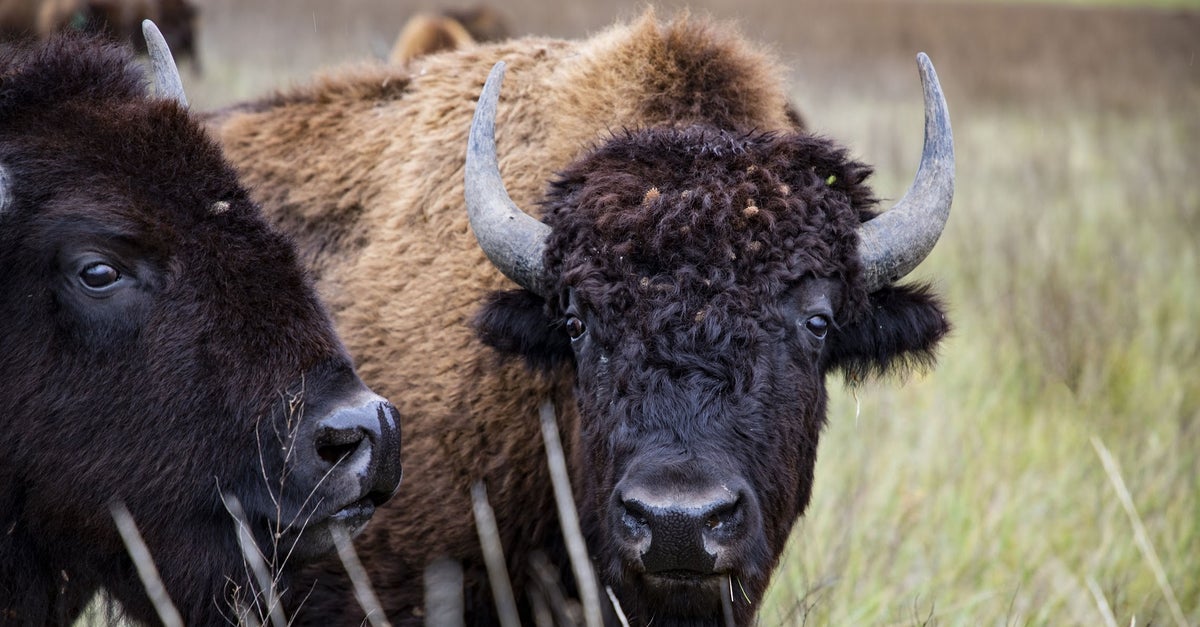When documentary filmmaker Ken Burns and his collaborator Dayton Duncan embarked on creating a documentary about the American buffalo, they were well-prepared. The buffalo had already made appearances in their previous films, such as “Lewis and Clark,” “The National Parks,” and “The West.” The idea to make a documentary solely focused on this magnificent mammal came from their fascination with its significance in the history of the American West.
“The American Buffalo,” a two-part documentary premiering on PBS, arrives at a timely moment. It coincides with a growing movement to reintroduce wild bison to their native habitat after their near-extinction in the 19th century. The eradication of buffalo was part of a federal campaign to eliminate the plains tribes’ main source of sustenance and make way for cattle ranching and white settlement. Today, there are only about 400,000 bison remaining in North America, with the majority being raised as livestock.
At the time of European arrival, an estimated 30 million to 60 million wild buffalo roamed across North America. The current population of 400,000 represents less than a tenth of a percent of their former numbers. To gain a comprehensive understanding of the conservation debates and controversies surrounding wild bison, “The American Buffalo” serves as an excellent starting point. Through 18 months of interviews with tribal leaders, conservationists, and public intellectuals, the documentary uses the buffalo’s history to shed light on the cultural clash that led to the decimation of both the animal and the indigenous peoples who relied on it.
The sheer magnitude of the effort to wipe out the buffalo herds is difficult to comprehend. Even in 1871, when the buffalo killing campaigns had already taken a toll on their numbers, a train heading to Dodge City, Kansas had to wait for two hours while a three-mile-long bison herd passed by. The first part of the documentary traces how buffalo-hunting tribes incorporated every aspect of the animal into their daily lives and then delves into its century-long decline. The second part focuses on the conservation movement that emerged in the 19th century, spearheaded by figures like naturalist George Bird Grinnell, ranchers Michel Pablo and Charles Allard, and former President Theodore Roosevelt. Their efforts saved the buffalo from extinction.
While the second part of the documentary offers a more optimistic narrative, the story of the American buffalo remains tragic as it nears the present day. Today, the buffalo is ecologically extinct, no longer fulfilling its role as a keystone species on the plains. The early proponents of the North American Model of Wildlife Conservation, which successfully restored populations of various animals, including elk, deer, and turkey, failed to achieve the same results with wild bison. This can be attributed, in part, to the federal government’s privatization of tribal reservation lands, which disadvantaged indigenous peoples in favor of white settlers and ranchers. The documentary concludes around 1996, with the establishment of the Inter-Tribal Bison Cooperative, which seeks to restore bison herds on reservations and reconnect indigenous communities to their cultural and spiritual ties to the animal.
The filmmakers refer to current developments beyond the documentary’s scope as the story’s “third act.” These ongoing efforts include the proliferation of conservation herds on tribal lands, the evaluation of Yellowstone bison for protection under the Endangered Species Act, the growth of private conservation herds like those at the American Prairie project, and the release of wild herds on tribal land adjacent to Glacier National Park. However, tensions persist regarding the future role of buffalo on the landscape. With the exception of a few herds, such as the Blackfeet herd and the Henry Mountains herd in Utah, most wild buffalo are confined within fences to prevent interactions with cattle, primarily due to concerns over the transmission of brucellosis, a costly disease causing reproductive issues.
While the documentary does not directly address these issues, Ken Burns hopes that by sharing the story, it can help facilitate a better understanding of them in the future. “A good story can reach everybody,” he says. “And that’s what we tried to do.”
Denial of responsibility! Vigour Times is an automatic aggregator of Global media. In each content, the hyperlink to the primary source is specified. All trademarks belong to their rightful owners, and all materials to their authors. For any complaint, please reach us at – [email protected]. We will take necessary action within 24 hours.


